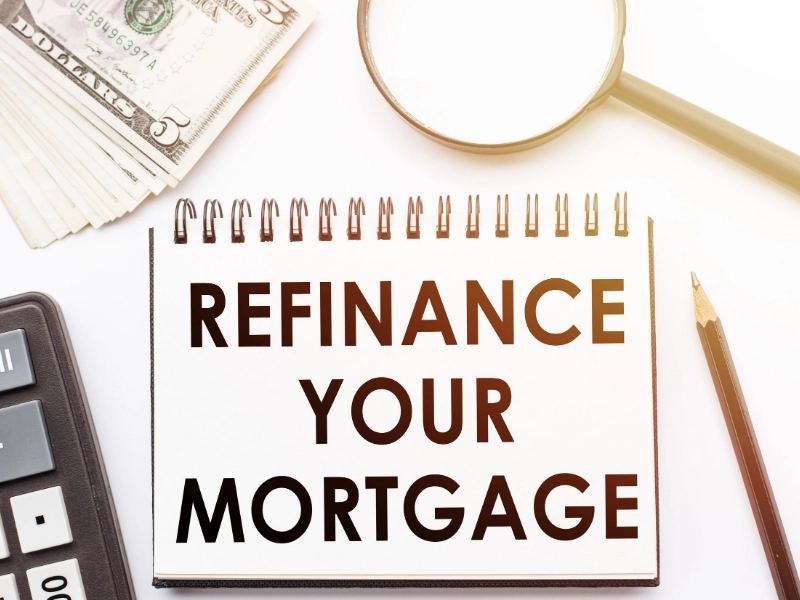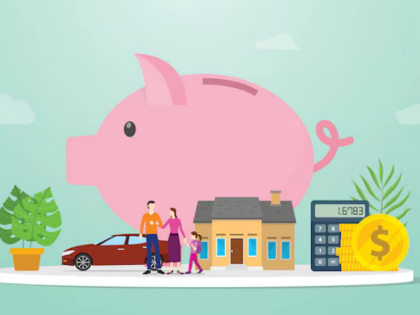How to Select the Ideal Personal Loan
Securing an appropriate personal loan might assist you in reaching your financial objectives and preventing expensive errors. Make sure to thoroughly examine the terms and charges in order to get the best offer. You will be able to get the best rates and loan conditions based on your income, debt-to-income ratio, and credit score. You may prequalify online for several loans without having to worry about your credit score being affected.
Evaluate Your Requirements

Examine Lenders
 Numerous lenders provide personal loans, with variations in terms of qualifying requirements, costs, credit score restrictions, and application processes. Before applying, you should check interest rates for the loan amount and term of your choice, regardless of the lender.
The lender's cost of capital, which is mostly impacted by movements in benchmark interest rates and the borrower's creditworthiness, sets interest rates. Lower rates are typically the result of good debt-to-income ratios and higher credit ratings.
Your credit score can be raised and revolving credit card debt can be replaced with a personal loan. A high-interest debt can also be consolidated into a single payment using this method.
Certain lenders provide special benefits to consumers, like autopay savings and zero-fee loans. Others may base their interest rate decisions on a prospective borrower's employer profile, which can ultimately provide cost savings for you. To verify eligibility and check rates without performing a hard credit inquiry, which can lower your score, look for lenders who offer prequalification.
Numerous lenders provide personal loans, with variations in terms of qualifying requirements, costs, credit score restrictions, and application processes. Before applying, you should check interest rates for the loan amount and term of your choice, regardless of the lender.
The lender's cost of capital, which is mostly impacted by movements in benchmark interest rates and the borrower's creditworthiness, sets interest rates. Lower rates are typically the result of good debt-to-income ratios and higher credit ratings.
Your credit score can be raised and revolving credit card debt can be replaced with a personal loan. A high-interest debt can also be consolidated into a single payment using this method.
Certain lenders provide special benefits to consumers, like autopay savings and zero-fee loans. Others may base their interest rate decisions on a prospective borrower's employer profile, which can ultimately provide cost savings for you. To verify eligibility and check rates without performing a hard credit inquiry, which can lower your score, look for lenders who offer prequalification.
Examine interest rate comparisons.
 You can choose the best option for your needs by comparing rates and terms because different lenders may have different criteria for evaluating borrowers. Most personal loans are unsecured, which means you can apply without having to provide any collateral. Instead, in order to determine if you can afford the loan, lenders look at your debt-to-income ratio and credit score.
Choose the deal that best suits your needs when looking for a personal loan by taking into account the interest rate, monthly payment amount, and any costs (such as the origination fee). Furthermore, take note that the typical payback durations for personal loans range from one to seven years. In the long run, longer repayment terms may result in cheaper monthly payments, but they will cost more because of increased interest.
Prequalification for personal loans is offered by certain lenders, like TD Fit, and it doesn't affect your credit scores. This might save you time by enabling you to review possible rates and terms prior to applying. But bear in mind that in order to have your information verified and to get final approval, you must submit a complete application.
You can choose the best option for your needs by comparing rates and terms because different lenders may have different criteria for evaluating borrowers. Most personal loans are unsecured, which means you can apply without having to provide any collateral. Instead, in order to determine if you can afford the loan, lenders look at your debt-to-income ratio and credit score.
Choose the deal that best suits your needs when looking for a personal loan by taking into account the interest rate, monthly payment amount, and any costs (such as the origination fee). Furthermore, take note that the typical payback durations for personal loans range from one to seven years. In the long run, longer repayment terms may result in cheaper monthly payments, but they will cost more because of increased interest.
Prequalification for personal loans is offered by certain lenders, like TD Fit, and it doesn't affect your credit scores. This might save you time by enabling you to review possible rates and terms prior to applying. But bear in mind that in order to have your information verified and to get final approval, you must submit a complete application.
Make a loan application.
 Establish your loan limit before submitting your loan application. Make sure your monthly payment fits into your budget by estimating it using a personal loan calculator. Next, do your homework on lenders and select one whose loan amounts correspond to your requirements.
Check the conditions, fees, and rates offered by the lender. Think about your needs and your credit situation when deciding between an unsecured or secured loan. Documentation such as W2s and pay stubs is usually required by lenders in order to confirm income, employment, and wages. Seek out lenders with clear, uncomplicated application procedures and accessible customer support agents who respond to inquiries by phone, email, or online chat.
Think about how long you will have to pay back your loan as well. You may save money on interest by choosing a shorter term, but make sure that you can afford the entire loan payback schedule. Lastly, search for lenders who don't charge late fees for early payments. You may pay off debt more quickly and save money on interest by doing this.
Establish your loan limit before submitting your loan application. Make sure your monthly payment fits into your budget by estimating it using a personal loan calculator. Next, do your homework on lenders and select one whose loan amounts correspond to your requirements.
Check the conditions, fees, and rates offered by the lender. Think about your needs and your credit situation when deciding between an unsecured or secured loan. Documentation such as W2s and pay stubs is usually required by lenders in order to confirm income, employment, and wages. Seek out lenders with clear, uncomplicated application procedures and accessible customer support agents who respond to inquiries by phone, email, or online chat.
Think about how long you will have to pay back your loan as well. You may save money on interest by choosing a shorter term, but make sure that you can afford the entire loan payback schedule. Lastly, search for lenders who don't charge late fees for early payments. You may pay off debt more quickly and save money on interest by doing this.









